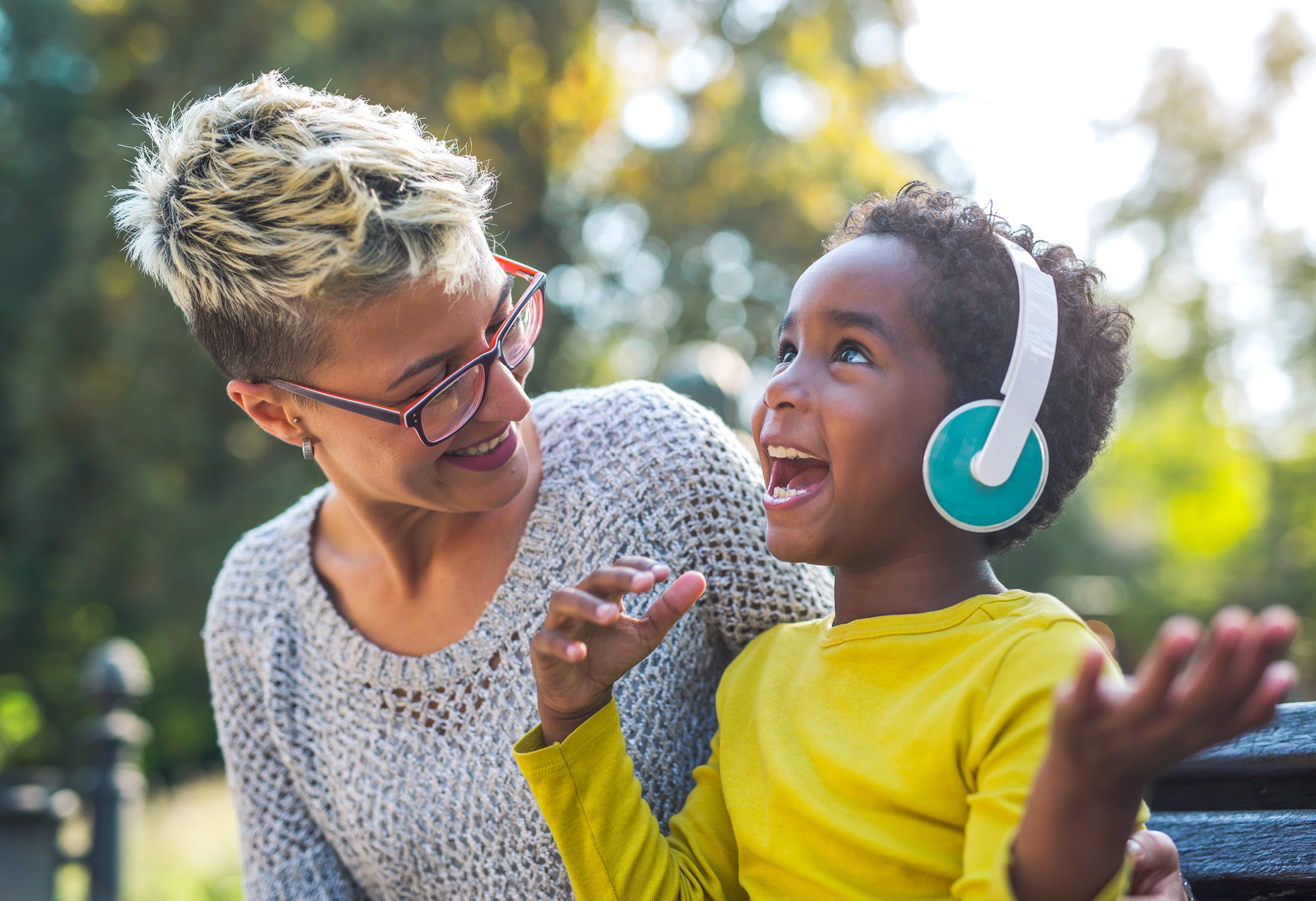Children are born into a world of sound and movement. Music is enjoyable and soothing and is a creative medium.
It also supports children to develop listening skills, concentration, coordination, cooperation, communication and memory. Repetition is important as children enjoy the music and learn the words and actions associated with the music.
Check out some of the ways you can explore music with your child at home with a range of free resources.
Classical Kids
Classic Kids is an Australian podcast series designed to introduce classical music to little ones, offering children an opportunity to learn about instrument sounds, develop their musical vocabulary, and explore the importance of listening.
Try this episode, listening carefully for the different musical instruments and the sounds they make.
Set up a train station with your child using chairs. Make some tickets and using some play money, buy and sell tickets. Listen for the low growly sounds and make up some growly movements in time to these. Ride your train in time to the music!
Music with Mel-o-dee: Kinderling Radio
Mel-o-dee (aka Melanie McLoughlin) is a professional trumpet player and music teacher, passionate about teaching children about classical music. In her episodes of Music Time, with the help of performers from the Sydney Youth Orchestra, she helps little ones explore a different instrument.
Start with this episode about the clarinet and then explore potential dress ups in your wardrobe with your child. Choose some things to dress your best and dress up together before going to the orchestra and listening to Mel-o-dee and her musical friends.
Dance to the music, swaying and moving in time to the music in your fancy clothes.
You might like to make hats for the performance with your creative kit pieces. Don’t forget to enjoy an ice cream!

What does your child learn through music and movement?
- When your child is enjoying music and moving to the music, they are:
- Expressing their feelings through their voice and body
- Engaging in self-expression
- Developing rhythm and harmony and improving their coordination
- Recognising and enjoying sounds, instruments and different music
Click here for more fun activities to try at home with your children!
